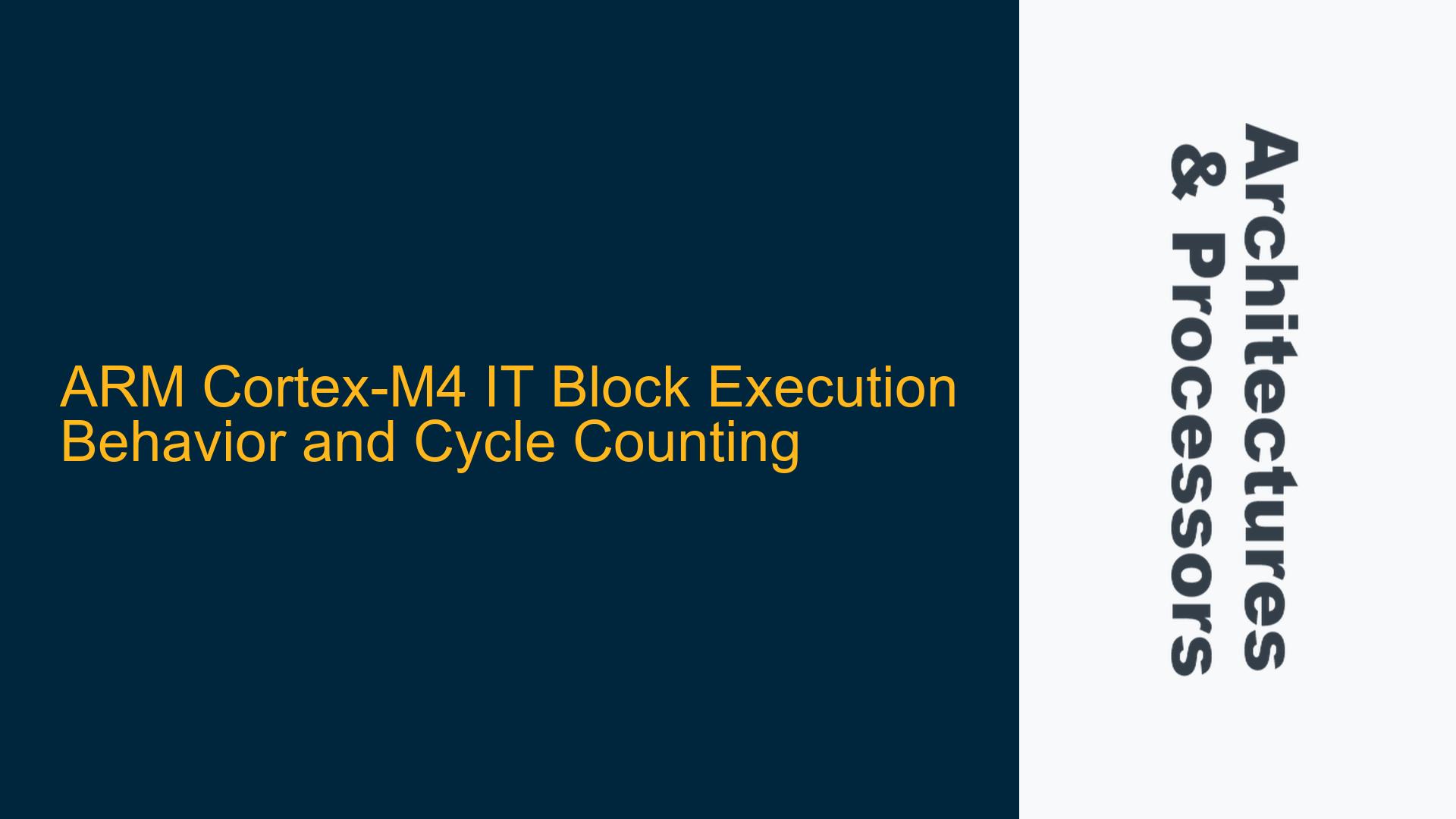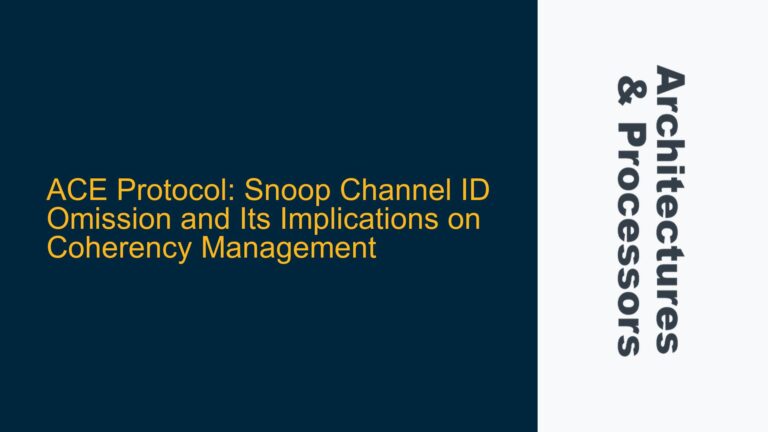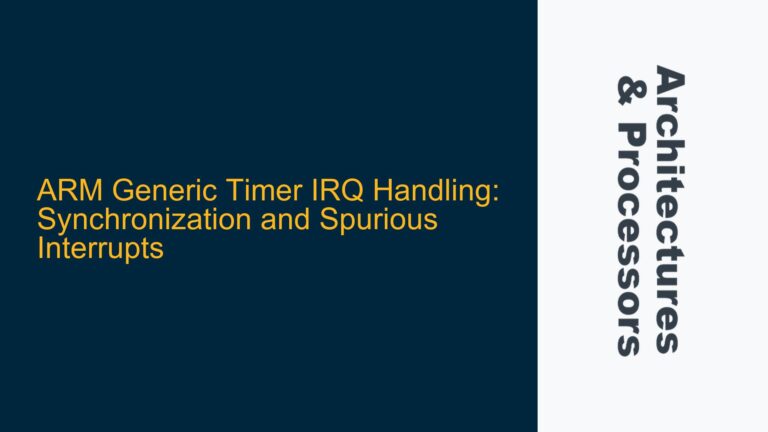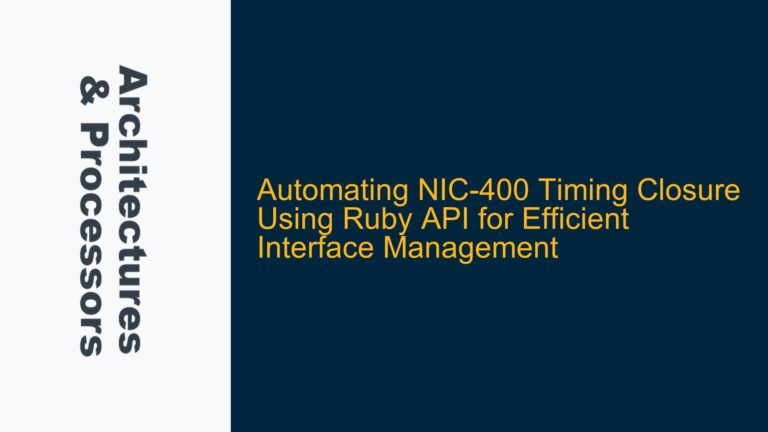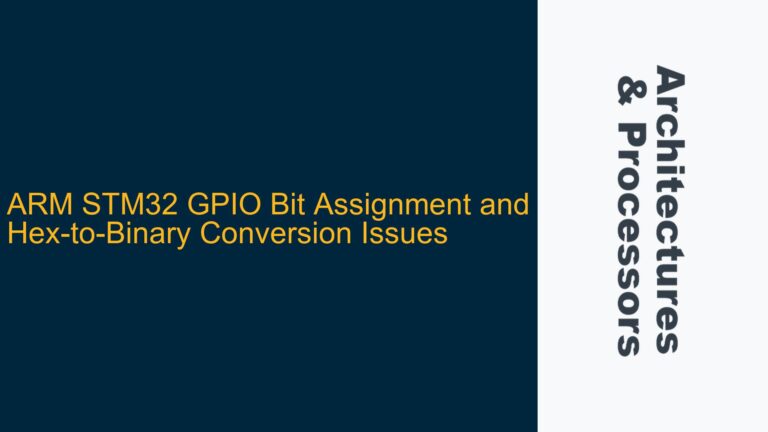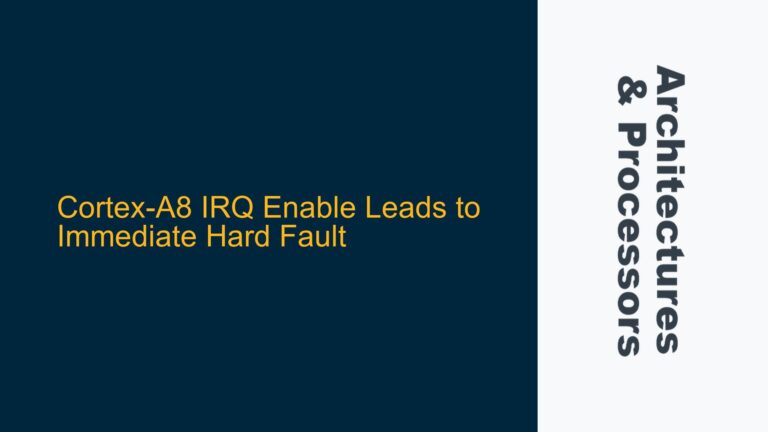ARM Cortex-M4 IT Block Execution Behavior and Cycle Counting
The ARM Cortex-M4 processor, like other ARM Cortex-M series processors, supports the Thumb-2 instruction set, which includes the IT (If-Then) instruction for conditional execution. The IT instruction allows up to four subsequent instructions to be conditionally executed based on the condition specified in the IT instruction. This feature is particularly useful for avoiding branch penalties in tight loops or performance-critical code sections. However, the behavior of the IT block and its interaction with the pipeline, cycle counting, and conditional execution can be confusing, especially when debugging or analyzing cycle-accurate performance.
In this post, we will explore the behavior of the IT block in the ARM Cortex-M4, focusing on why instructions within the IT block appear to always execute, even when the condition is not met, and how this affects cycle counting. We will also discuss the pipeline behavior, the role of status bits, and how to correctly interpret the execution of conditional instructions within an IT block.
Pipeline Behavior and Conditional Execution in IT Blocks
The ARM Cortex-M4 processor uses a 3-stage pipeline (Fetch, Decode, Execute) for most instructions, including those within an IT block. When an IT instruction is encountered, the processor fetches and decodes the subsequent instructions as usual, but their execution is conditional based on the condition specified in the IT instruction and the current state of the APSR (Application Program Status Register) flags.
The IT instruction itself does not modify the APSR flags; it only specifies the condition under which the following instructions should be executed. For example, in the code snippet provided:
0100093a: 4291 cmp r1, r2
0100093c: BF28 it hs
0100093e: 4611 mov r1, r2
The cmp instruction sets the APSR flags based on the result of comparing r1 and r2. The it hs instruction specifies that the following mov instruction should be executed only if the APSR flags indicate that the comparison result was "higher or same" (HS), which corresponds to the condition code hs.
However, even if the condition is not met, the mov instruction is still fetched and decoded, and it enters the pipeline. This is why the instruction appears to be executed in the debugger, even when the condition is not met. The actual execution of the mov instruction (i.e., the transfer of data from r2 to r1) is conditional, but the instruction itself still goes through the pipeline stages.
This behavior can be confusing when cycle counting, as the cycle counter will increment for each instruction that enters the pipeline, regardless of whether the condition is met. However, the actual execution of the instruction (i.e., the data transfer) will only occur if the condition is met.
Misinterpretation of Cycle Counting in IT Blocks
One common misconception is that instructions within an IT block that do not meet the condition will not consume any cycles. This is not the case. The ARM Cortex-M4 processor still fetches and decodes these instructions, and they enter the pipeline, which consumes cycles. The difference is that the execution stage of these instructions is conditional, and the actual data transfer or operation will only occur if the condition is met.
In the provided code snippet, the mov instruction will always consume cycles for fetching and decoding, but the actual data transfer from r2 to r1 will only occur if the condition specified by the it hs instruction is met (i.e., if the result of the cmp instruction indicates that r1 is higher than or the same as r2).
This behavior is by design and is intended to avoid branch penalties. By using the IT block, the processor can conditionally execute instructions without having to flush the pipeline, which would occur if a branch instruction were used instead. This results in more predictable timing and better performance in tight loops or performance-critical code sections.
Correctly Interpreting IT Block Execution and Cycle Counting
To correctly interpret the execution of instructions within an IT block and their impact on cycle counting, it is important to understand the following points:
-
Pipeline Behavior: Instructions within an IT block are always fetched and decoded, and they enter the pipeline. This means that they will always consume cycles for these stages, regardless of whether the condition is met.
-
Conditional Execution: The execution stage of instructions within an IT block is conditional. The actual data transfer or operation will only occur if the condition specified by the IT instruction is met.
-
Cycle Counting: When cycle counting, it is important to distinguish between the cycles consumed by fetching and decoding instructions and the cycles consumed by the actual execution of the instruction. Instructions within an IT block will always consume cycles for fetching and decoding, but the execution stage may or may not consume additional cycles, depending on the condition.
-
Debugger Behavior: When stepping through code in a debugger, instructions within an IT block will always appear to be executed, even if the condition is not met. This is because the debugger shows the instructions as they enter the pipeline, not as they are executed.
To illustrate this, let’s consider the provided code snippet again:
0100093a: 4291 cmp r1, r2
0100093c: BF28 it hs
0100093e: 4611 mov r1, r2
- The
cmpinstruction sets the APSR flags based on the comparison ofr1andr2. - The
it hsinstruction specifies that the followingmovinstruction should be executed only if the APSR flags indicate that the comparison result was "higher or same" (HS). - The
movinstruction is fetched and decoded, and it enters the pipeline. This consumes cycles. - If the condition is met, the
movinstruction is executed, and the data transfer fromr2tor1occurs. This consumes additional cycles. - If the condition is not met, the
movinstruction is not executed, and the data transfer does not occur. However, the cycles consumed by fetching and decoding the instruction are still counted.
Practical Implications and Best Practices
Understanding the behavior of IT blocks and their impact on cycle counting is crucial for writing efficient and predictable code on the ARM Cortex-M4. Here are some practical implications and best practices:
-
Avoid Overusing IT Blocks: While IT blocks can improve performance by avoiding branch penalties, overusing them can lead to code that is difficult to read and maintain. Use IT blocks judiciously, especially in performance-critical sections of code.
-
Cycle Counting: When performing cycle counting, be aware that instructions within an IT block will always consume cycles for fetching and decoding, even if the condition is not met. This can affect the accuracy of your cycle counts, especially in tight loops.
-
Debugging: When debugging code that contains IT blocks, be aware that the debugger will show instructions as they enter the pipeline, not as they are executed. This can lead to confusion if you are not familiar with the behavior of IT blocks.
-
Code Optimization: Use IT blocks to optimize performance-critical code sections, but always verify the impact on cycle counts and overall performance. In some cases, it may be more efficient to use branch instructions instead of IT blocks, especially if the condition is rarely met.
-
Documentation: Clearly document the use of IT blocks in your code, especially if the behavior is non-intuitive or if the code is performance-critical. This will help other developers understand the code and avoid potential pitfalls.
Conclusion
The ARM Cortex-M4 IT block is a powerful feature that allows for conditional execution of instructions without the overhead of branch instructions. However, the behavior of IT blocks can be confusing, especially when it comes to cycle counting and debugging. By understanding the pipeline behavior, the role of the APSR flags, and the impact on cycle counting, you can write more efficient and predictable code on the ARM Cortex-M4.
When working with IT blocks, always keep in mind that instructions within the block will always be fetched and decoded, and they will consume cycles regardless of whether the condition is met. The actual execution of the instruction is conditional, and this can affect cycle counts and debugging. By following best practices and understanding the underlying behavior, you can make the most of the IT block feature in your ARM Cortex-M4 projects.
